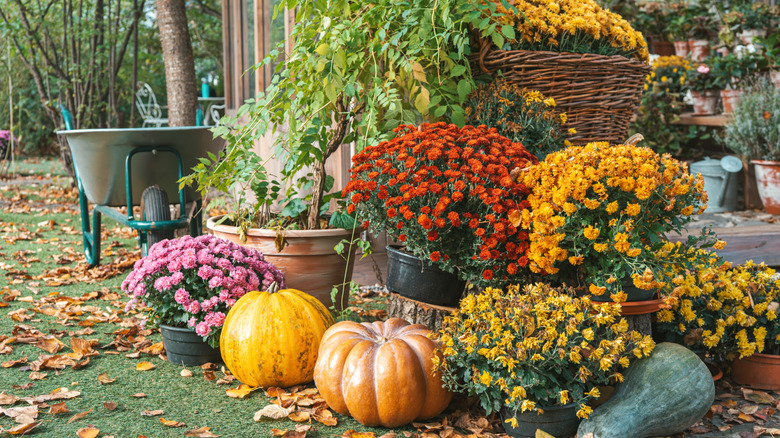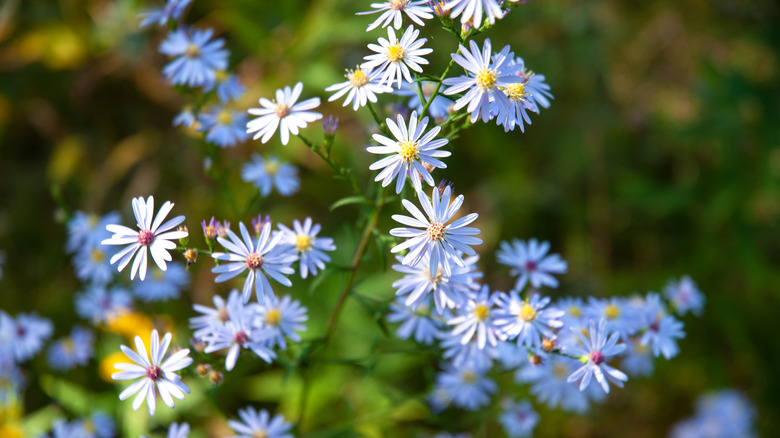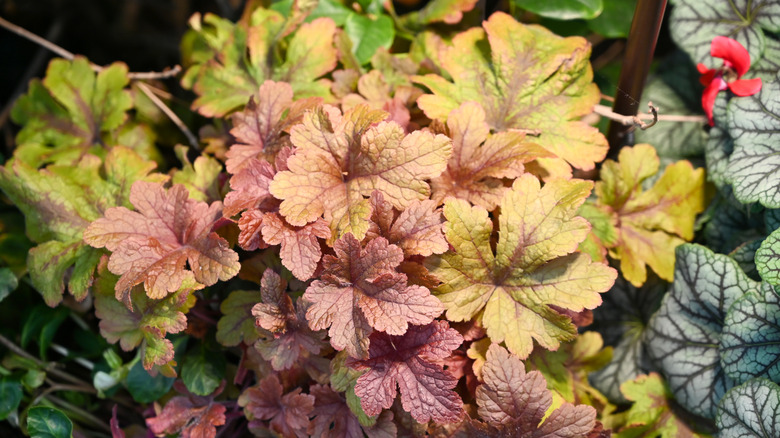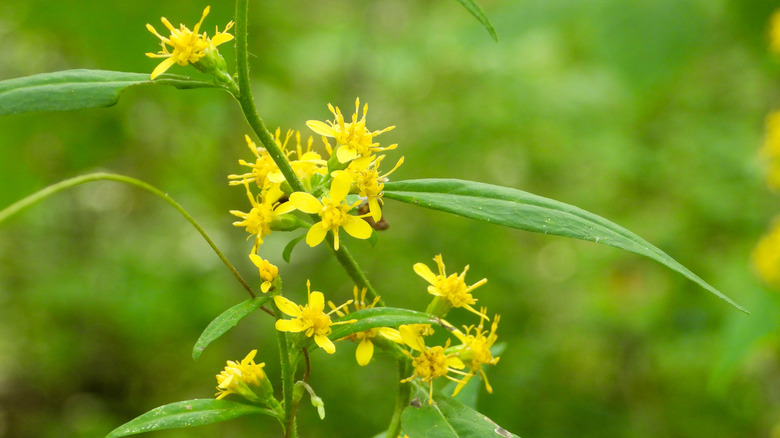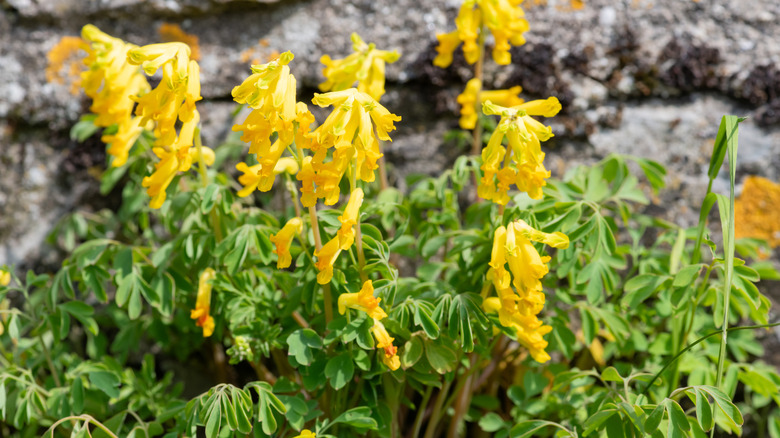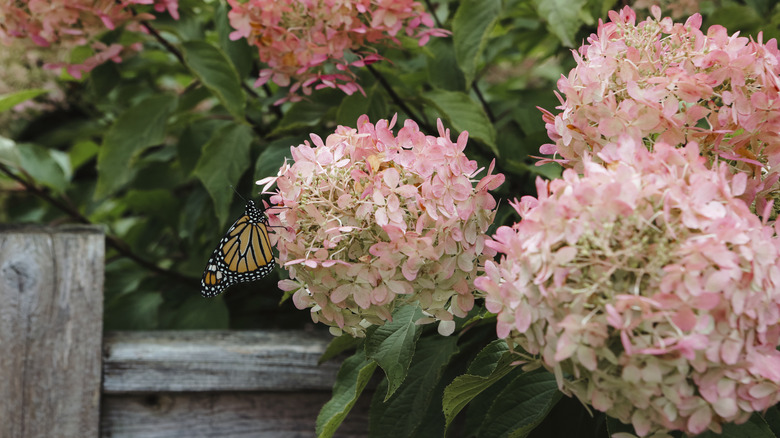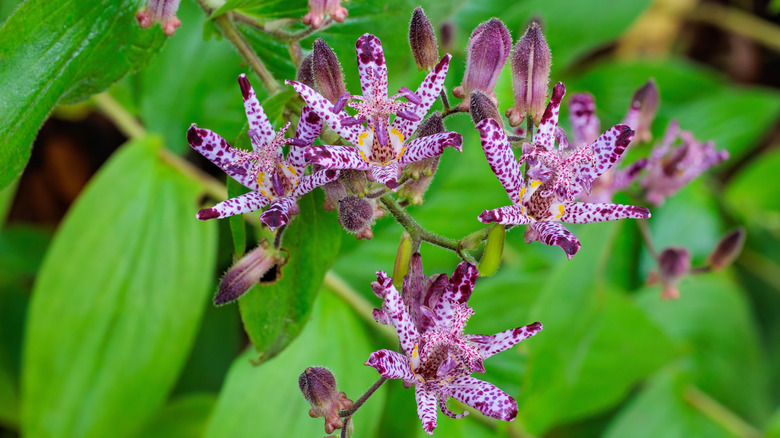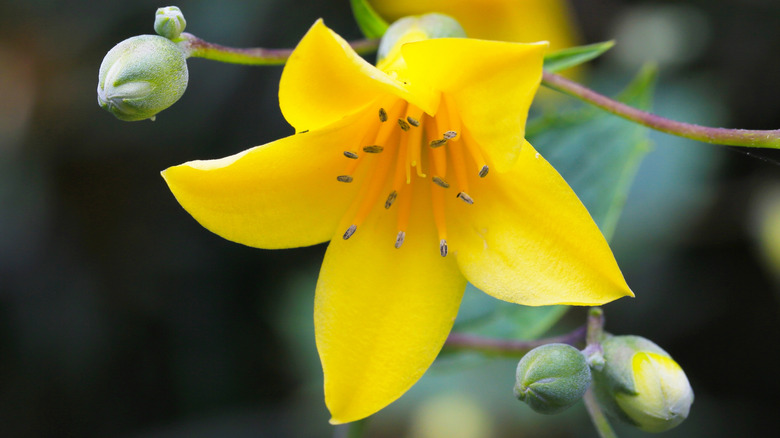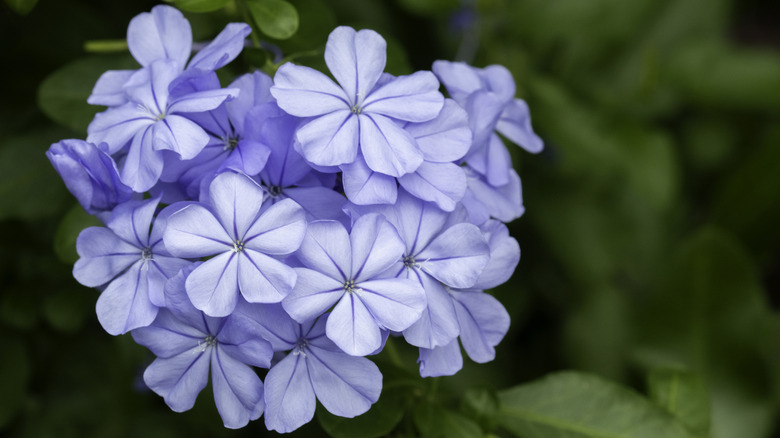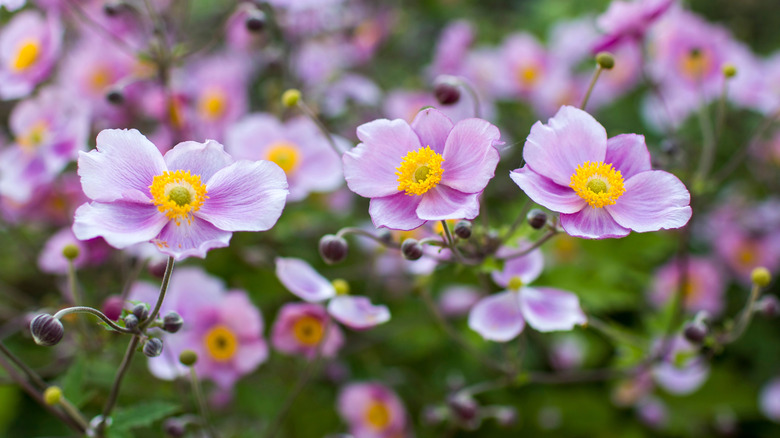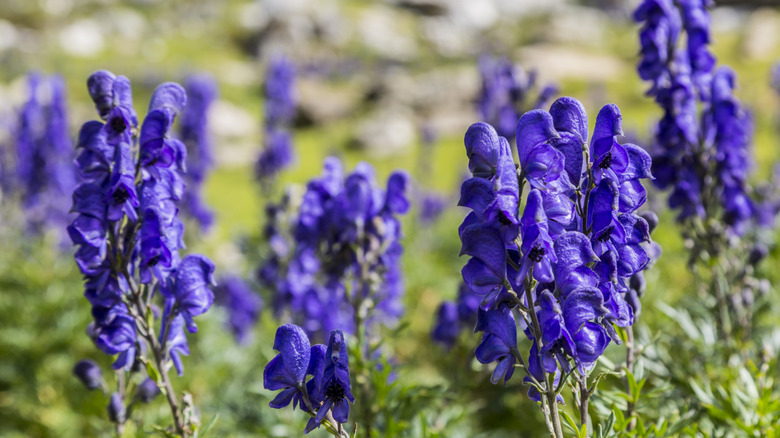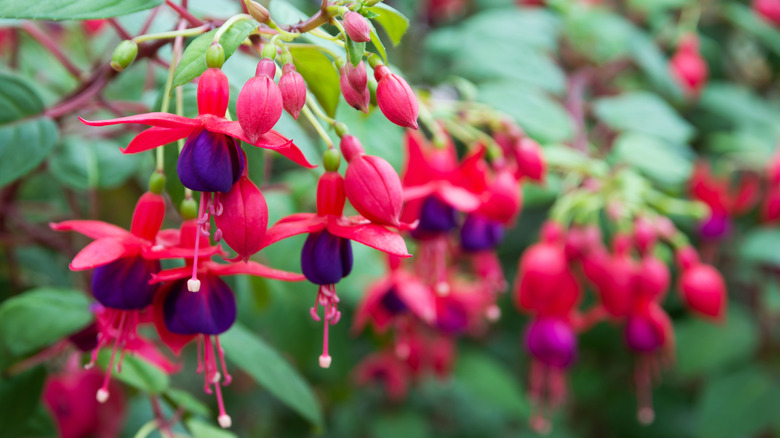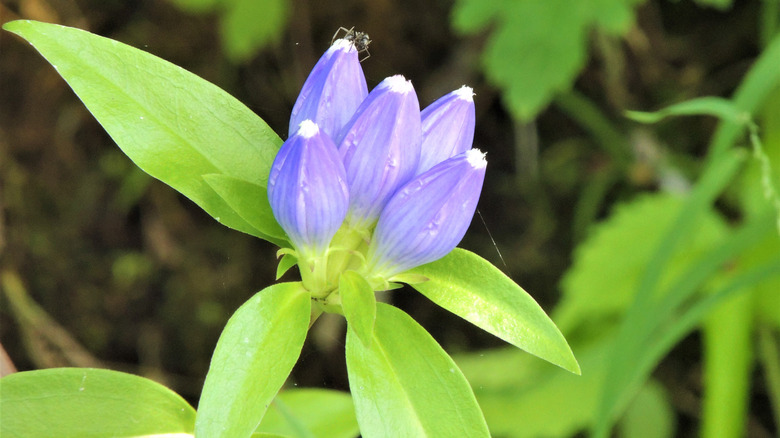13 Stunning Fall-Blooming Flowers That'll Thrive In Shady Areas Of Your Garden
For many gardeners, fall is a time when things are winding down in preparation for the colder temperatures. Flowers stop blooming, some birds and wildlife migrate or start looking for places to hibernate, and gardeners perform maintenance tasks, such as pruning and preparing the garden for cold weather. For gardeners who don't want to see the season end, we have some good news. Fall doesn't have to mean the end of the blooming season. There are a large variety of plants that bloom later in the year, such as any of these 15 stunning flowers to plant late in summer for a spectacular fall garden – And, if you want to help the pollinators when food starts to get scarce, you'll want to ensure you're also growing end-of-summer plants that'll keep your garden full of pollinators through fall. However, many of these plants won't thrive in the shadiest areas of your garden, so you need to plant flowers that can grow without much sunlight.
Fall flowers bring a special charm to your landscape. Not only can many late-season bloomers handle the dropping temperatures, but they also offer vibrant color when the rest of the garden's colors begin to fade. This is especially appreciated in those shady areas where pops of color really stand out. Fall-blooming flowers that thrive in shade can easily transform your yard into a welcoming, lively space that carries beauty well past the summer months, even in the darker corners.
Short's aster
Short's aster (Symphyotrichum shortii) is a herbaceous perennial that starts its blooming season in September and continues into October for about 4 to 6 weeks overall. The eastern U.S. native thrives in partial sun to full shade and does the best in medium to dry soil, as long as it isn't getting too much sunlight. Short's aster is a pollinator favorite, appealing to butterflies and bees, and its leaves also feed other beneficial insects. The plant's flowerheads provide a striking and colorful fall display, with potentially hundreds of flowerheads once it becomes established.
Coral bells
One of the most ideal plants for shady and semi-shady areas is coral bells (Heuchera villosa 'Autumn Bride'). With vibrant foliage and long-lasting blooms, they are among the easiest plants to grow for beginner gardeners, work well in beds and containers, and require little maintenance to thrive. Hardy in zones 4 to 9, the 'Autumn Bride' cultivar blooms in September and October, providing your garden with lovely fall color. Coral bells with pale foliage need more shade than the darker-leafed varieties. Although coral bells that bloom in the late spring and summer need regular watering due to their shallow roots, fall-blooming varieties do not need as much.
Zigzag goldenrod
Zigzag goldenrod (Solidago flexicaulis) is a herbaceous perennial that is hardy in growing zones 3 to 8 and blooms from July to September, providing bright yellow blossoms to enhance your fall garden. This woodland species does best when planted in dappled sunlight, but it can thrive in full shade as well, making it a great choice for shade gardens. The bright yellow blooms grow in clusters at the top of the stems and are favorites of butterflies and other pollinators. Goldenrod is not considered toxic to animals or children and can be planted anywhere safely.
Yellow corydalis
Add some yellow to your fall garden's shady areas with the lovely yellow corydalis (Pseudofumaria lutea). This bright, sunny plant grows to be about 12 to 15 inches tall, with yellow-green leaves and bright yellow, tube-like flowers. Yellow corydalis thrives in hardiness zones 4 to 8 and prefers soil that is rich and moist but must drain well. Yellow corydalis doesn't handle hot or humid weather well, so it's not a good choice for planting in the deep South. Yellow corydalis is considered toxic to dogs and other animals, so take care where you plant it.
Hydrangeas
One of the most well-known plants on our list is the hydrangea shrub. These showy, popular shrubs feature stunning flowers, adding lovely pink, purple, blue, and white blooms to your fall shade gardens. Hydrangea varieties that bloom in the fall include oakleaf hydrangeas(Hydrangea quercifolia) and panicle hydrangeas (Hydrangea paniculata 'SMHPLQF' LITTLE QUICK FIRE). Hydrangeas are usually easy to grow and are hardy in growing zones 3 to 9. They tolerate a range of soil types and thrive in shadier areas, making them a nice fit for shade gardens.
Toad Lily
If you love unique and colorful blooms, you will enjoy having a toad lily (Tricyrtis hirta) in your garden. The striking blooms feature white to light purple flowers with six petals. This lovely flower thrives in hardiness zones 4 to 8 and prefers partial to full shade, making it a great addition to shady places in your garden. Take care to keep your children and pets, particularly cats, away from toad lilies, as they are considered toxic. Toad lilies prefer well-draining, moist, and loamy soil with a neutral to acidic pH level.
Yellow wax bells
The yellow wax bell (Kirengeshoma palmata) is a herbaceous perennial native to the mountainous areas of Korea and Japan. This plant is part of the Hydrangea family and thrives in zones 4 to 8. Thriving in partial to full shade, yellow wax bells really brighten up shady areas of your garden. Keep their soil consistently moist (not sopping wet) and avoid letting it dry out between watering sessions. If you are planting more than one wax bell plant, space them about 36 inches apart, as they grow to be about 3 or 4 feet in height.
Leadwort
Leadwort (Ceratostigma plumbaginoides) is a low, spreading perennial used as a ground cover in many gardens. Although the name may not be very pretty-sounding, the flowers that bloom from leadwort are gorgeous, featuring bright green foliage and stunning blue blooms. In the fall, it offers colorful foliage and long-lasting blooms. Leadwort thrives in sunny areas but does best where it can get afternoon shade. This lovely blue-flowered plant is hardy in zones 5 to 9. Leadwort is considered non-toxic to cats, dogs, and horses.
Japanese anemone
If you want something different to add to your fall garden, say hello to the Japanese anemone (Anemone hupehensis). These lovely perennials feature large, saucer-like blooms with yellow centers that are very attractive to pollinators. The blooming season for Japanese anemone starts in late summer and continues through fall, adding lovely pink and yellow bursts of color to your fall garden. The pretty flowers thrive in partial shade, but too much shade may cause the plants to flop over. Plant them somewhere that receives morning sun and afternoon shade, or dappled sunlight, throughout the day in well-draining, rich, fertile soil that is kept moist.
Monkshood
Monkshood (Aconitum) is a tall, striking perennial popular for its amazing appearance and preference for partial shade. This unique plant got its name from its unusual flowers that look like the hood of a monk's robe. Monkshood thrives in hardiness zones 3 to 8 and blooms in summer and into fall. This colorful plant is resistant to deer and rabbits and is considered very toxic to people and animals. Soil preferences of Monkshood are well-draining, organic-enhanced soil that is kept moist but not oversaturated. Don't let the soil dry out between watering times.
Fuchsias
The popular plant fuchsia (Fuchsia x hybrid) loves shade and makes a colorful addition to the shady areas of your garden. This beautiful plant starts blooming in spring and continues all the way through fall, featuring gorgeous, bright red and purple flowers that resemble earrings. Fuchsia is a favorite of hummingbirds and other pollinators due to its unique design. Fuchsias prefer fertile, well-draining soil with a lot of organic matter. They are versatile plants that thrive in hanging baskets, in containers as houseplants, or outside in the garden. Fuchsias are not toxic to humans or animals.
Bottle Gentian
Bottle Gentian (Gentiana andrewsii) features deep blue flowers shaped like bottles that never open on their own. They are pollinated exclusively by bumblebees, the only pollinators with the strength and size to open the bottle-like blooms and get inside. This unique plant blooms into late fall and tolerates cold weather and frost without any problems. It does not grow well in humid, hot conditions, making it best suited for zones 3 to 6. Bottle Gentian is not considered toxic to pets or humans. This unique plant thrives in partial shade in fertile soil rich in organic matter.
